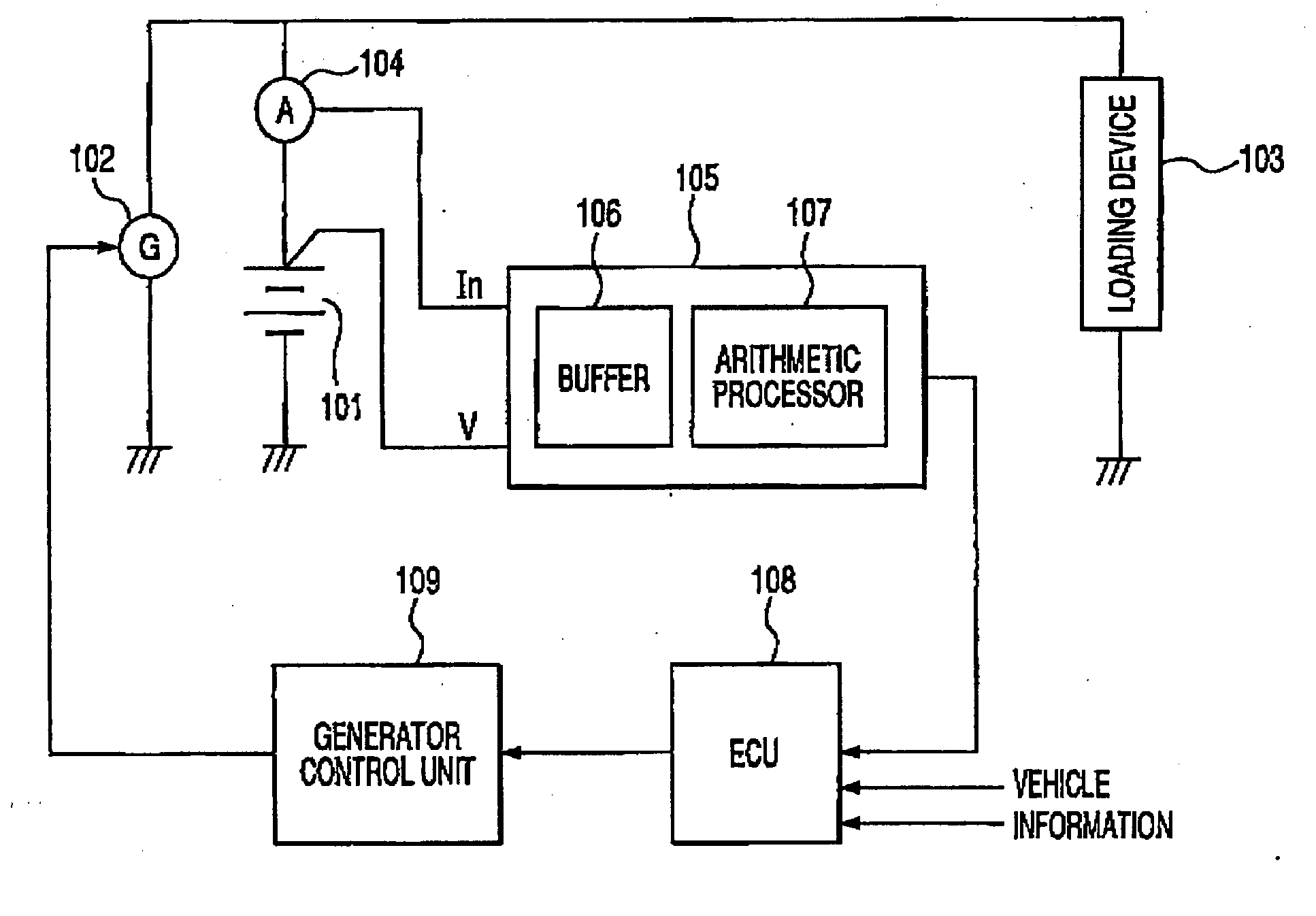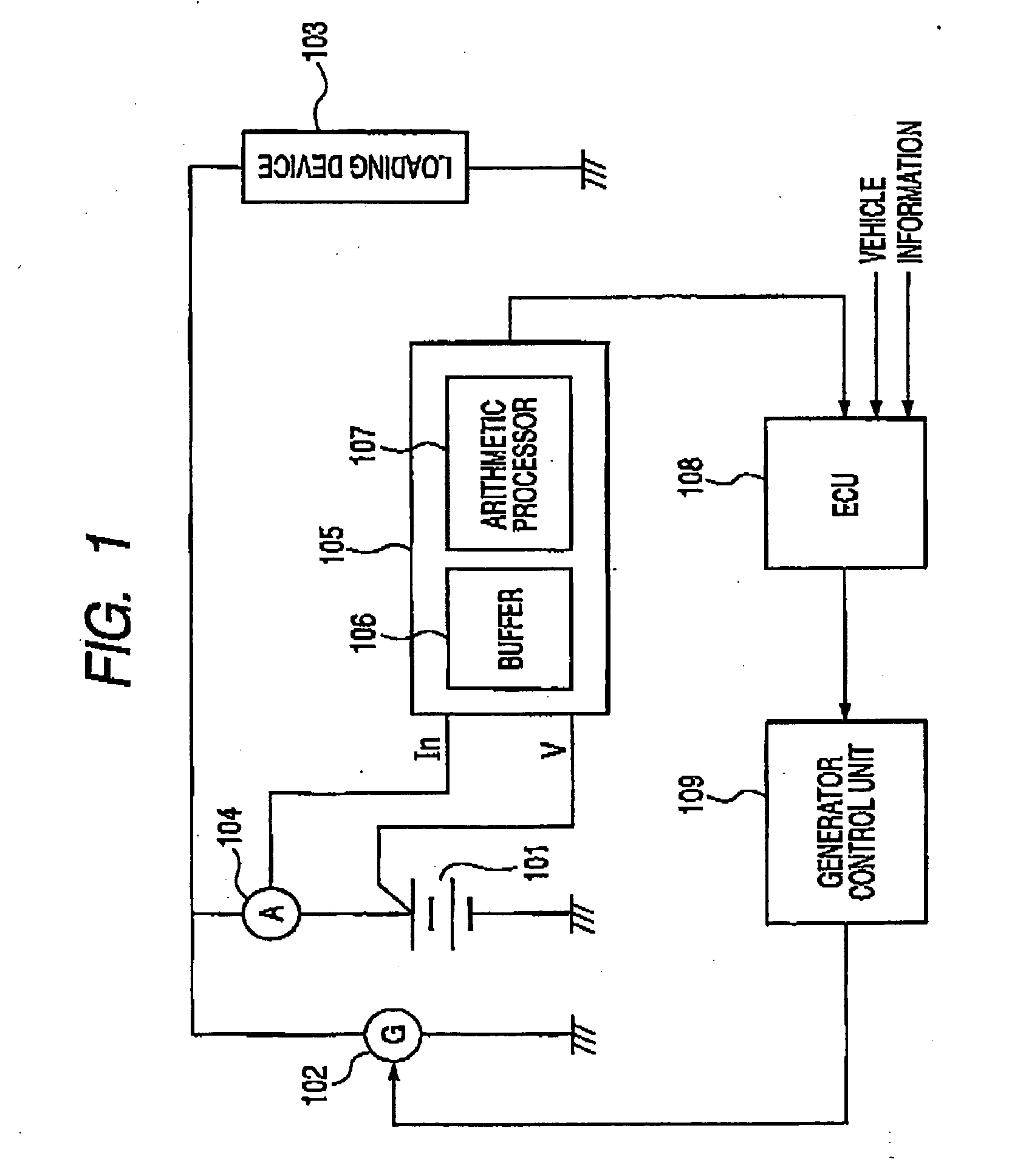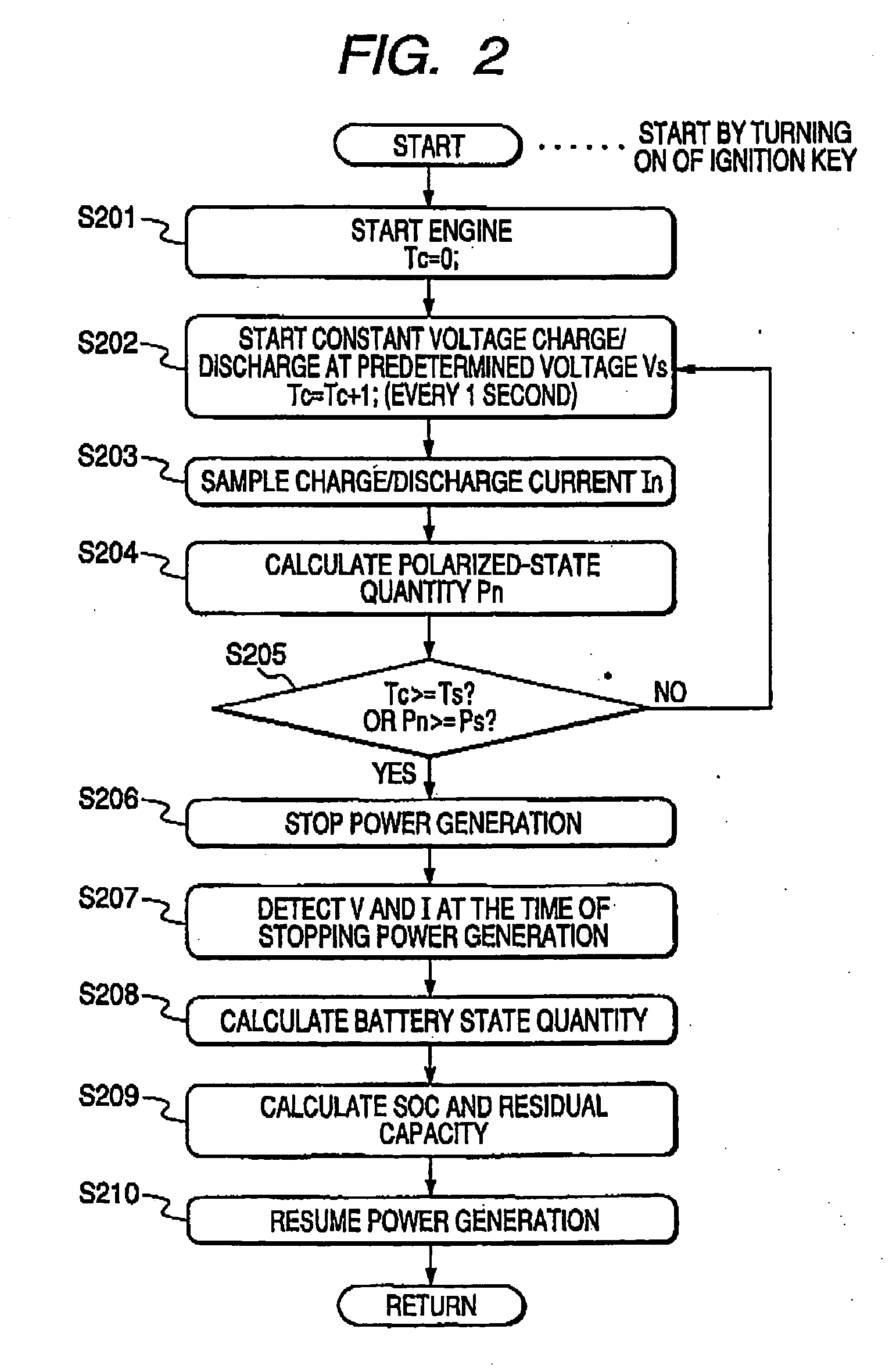Apparatus for detecting charged state of secondary battery
a secondary battery and charging state technology, applied in secondary cell servicing/maintenance, batteries, instruments, etc., can solve the problems of large errors caused by battery polarization, fuel consumption deterioration, soc estimation accuracy significantly deterioration, etc., to reduce the burden on the battery and improve the accuracy of calculating the charged state.
- Summary
- Abstract
- Description
- Claims
- Application Information
AI Technical Summary
Benefits of technology
Problems solved by technology
Method used
Image
Examples
first embodiment
[0042] With reference to FIG. 1, a description is provided first on a battery state detecting apparatus (SOC arithmetic unit) serving as a charged state detecting apparatus for a secondary battery (hereinafter also referred as a “battery”) related to a first embodiment of the present invention.
[0043] An in-vehicle secondary battery shown in FIG. 1 is provided with a battery 101, an on-vehicle generator 102 (hereinafter, simply referred to as “generator”), an on-vehicle electric loading device 103, a current sensor 104, battery state detector 105, an ECU 108 and a generator control unit 109. Among these components, the battery state detector 105 constitutes the charged-state detecting apparatus for a secondary battery of the present invention.
[0044] Batteries used for the battery 101 include, without limitation, a secondary battery, such as a lead-acid battery, a nickel-metal hydride battery and a lithium cell. In the present embodiment, a commonly used lead-acid battery for vehicl...
second embodiment
[0073] A second embodiment of the present invention is described below. In the second embodiment, the pseudo open-circuit voltage Vo is detected without stopping power generation of the generator 102. In the second embodiment, the identical or similar components or processes to those in the first embodiment are given the same references for the sake of simplification or omission of explanation.
[0074] With reference to FIG. 7, the present embodiment is explained. The processes shown in a flow diagram of FIG. 7 are performed by the arithmetic processor 107 In the battery state detector 105. This flow diagram Is essentially the same as the one shown in FIG. 2 except that a step of calculating the internal resistance R has been added at the time of the engine start, the Internal resistance R is used at step S208 to calculate the pseudo open-circuit voltage Vo, and the pseudo open-circuit voltage Vo is used at step S209 to calculate the SOC.
[0075] The present embodiment is characterize...
third embodiment
[0085] A third embodiment of the present invention is described below. In the third embodiment, the identical or similar components or processes to those in the above embodiments are given the same references for the sake of simplification or omission of explanation.
[0086] According to the first and second embodiments, variation in the accuracy of SOC detection due to the variation of the polarized-state quantity Pn can be reduced by performing the stabilization control of the polarization state before estimating a charged state of the battery. However, the stabilization control of the polarization state according to the first and second embodiments is a control for allowing the polarization state of the battery 101 to serve as a predetermined reference polarization state. Hence, in order to realize the reference polarization state, it has been required to force the battery 101 to perform the constant voltage charge / discharge. In FIG. 1, however, the generator control unit 109 orig...
PUM
 Login to View More
Login to View More Abstract
Description
Claims
Application Information
 Login to View More
Login to View More - R&D
- Intellectual Property
- Life Sciences
- Materials
- Tech Scout
- Unparalleled Data Quality
- Higher Quality Content
- 60% Fewer Hallucinations
Browse by: Latest US Patents, China's latest patents, Technical Efficacy Thesaurus, Application Domain, Technology Topic, Popular Technical Reports.
© 2025 PatSnap. All rights reserved.Legal|Privacy policy|Modern Slavery Act Transparency Statement|Sitemap|About US| Contact US: help@patsnap.com



